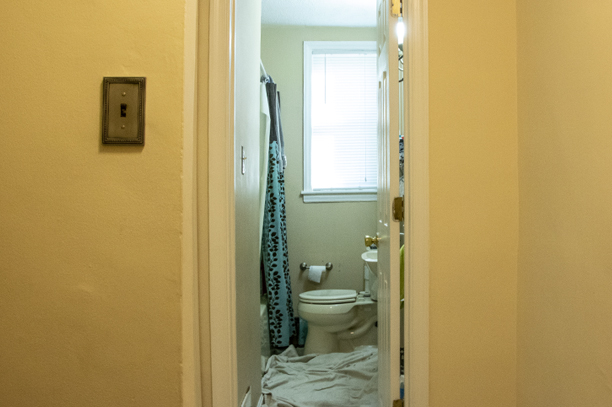What others take for granted
By Zachary Davis
To go from her second-story bedroom to her second-story bathroom, Christine Hoag had to crawl. The bathroom doorframe was not wide enough for her wheelchair to fit through, the hall was too narrow for her chair to turn around and the bathroom itself was so cramped she could barely move between the tub and toilet.
“It felt like I had lost every shred of my dignity,” she says. She also, because of the crawling, had suffered multiple back injuries.
Hoag has Shy-Drager syndrome, a nervous system disorder with symptoms that resemble Parkinson’s disease. A related condition causes low blood pressure and tachycardia, which can produce lightheadedness and put her at risk of falling every time she transitions from sitting to standing. For a proudly independent entrepreneur who once founded her own home care company, the prospect of moving to a nursing home was not appealing. “I want to stay in my home,” she told me, and “have a nice quality of life as long as I’m here.”
I met Christine Hoag the day her home – a rowhouse that had not seen a renovation since its construction in 1944 – started to change. Contractors who specialize in home accessibility modifications were setting up to widen her bathroom door frame, replace her bathtub with an accessible shower stall and rotate her toilet to maximize the space in the middle of the room.
The money for these modifications came from the Nowhere Else to Turn program, offered by CDS’s Delaware Assistive Technology Initiative. Funded by a grant from the Christopher and Dana Reeve Foundation, Nowhere Else To Turn provides financial support to Delawareans with paralysis- and weakness-causing conditions whose requests for home modifications have been denied by other funding organizations.
I was in Hoag’s house because Nowhere Else to Turn also seeks to raise awareness. Many residential buildings were not (and still are not) designed with accessibility in mind, forcing prospective homeowners with mobility limitations either to look elsewhere or find the money to pay for modifications.
Or, to opt for Door Number Three and move into the residence even though they can’t afford any alterations. Too many Delawareans have been forced to choose this option.
The existing funding options for people with financial difficulties can only help a tiny percentage of this population. I spoke to the director of one organization that helps people with paralysis pay for home mods. I was curious why I didn’t see their advertising anywhere – no information on the funding availability, no application forms, no number to call.
“If it was widely known this program existed, we’d be flooded with requests,” the director told me. They would either have to spread their money so thin that everyone received a trivial payout or they would have to turn almost everyone down.
“And that would break our hearts,” she said.
Programs like Nowhere Else To Turn shouldn’t have to exist. People with mobility limitations shouldn’t have to choose between buying a home and living with independence and dignity. Rather, homebuilders should construct residences with doorframes a few inches wider. They should make sure halls are wide enough for a wheelchair to turn around. They should put light switches low enough for users to reach from a sitting position. That’s another point Nowhere Else to Turn is making: it wants to draw attention to the overwhelming need for accessible housing and the utter ease with which many common accessibility problems can be eliminated.
Several months after her home modifications were complete, Christine Hoag called me. The change in her voice was astonishing – I heard an ease, a lightness that was completely new.
“It’s just changed my life,” she told me. “Things have been so much better.”
That shouldn’t have to be such a rare and special joy.
Categories: accessibility, assistive technology, independent living, physical disabilities
Tags: Christopher and Dana Reeve Foundation, Delaware Assistive Technology Initiative, Nowhere Else To Turn, Parkinson’s disease.


